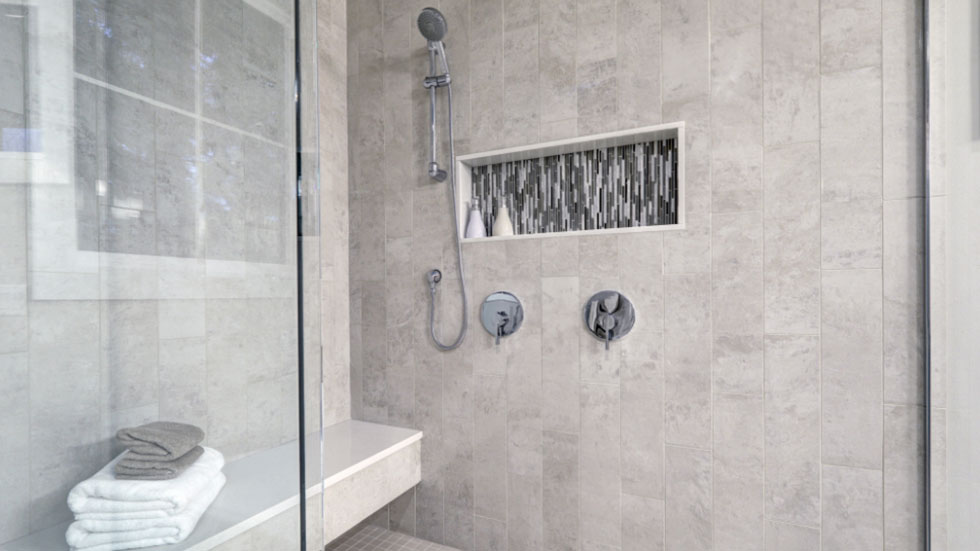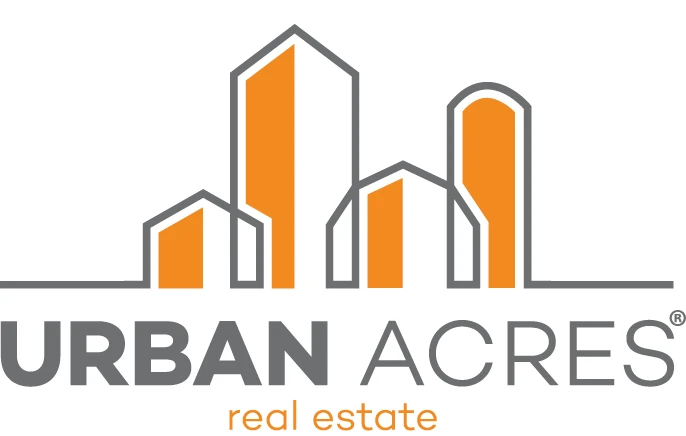Arguably the best thing about Iowa City and its surrounding area is that it’s a vibrant and diverse blend of people, both young and old. As a matter of fact, according to the United States Census Bureau, only 11.60% of Iowa City’s population is aged 65 and older. Those over the age of 50 make up approximately 23% of the city’s population, meaning people aren’t just coming here to retire, they’re coming here with a goal to age in place.
In recent years, the area has gathered some impressive acknowledgments, including being named to HGTV’s Best Small Towns to Retire In list in 2023 (coming in at #2), and Forbes’ Best Places to Retire in 2024 list. Both lists nod to the area’s great access to healthcare, affordable housing (and amenities!), low crime rates, as well as good air quality, comfortable climate, and accessibility.
But the area isn’t just appealing to retirees, it’s also recognized as a place that’s ahead of the curve when it comes to aging in place. According to the National Institute on Aging, the phrase “aging in place” is defined as staying in your own home as you get older, maintaining independence for as long as possible, and turning to family and friends for help when needed as opposed to moving to a traditional senior-living facility.
According to a Forbes Health 2024 article,
- 77% of adults over the age of 50 prefer to age in place.
- 92% of older adults prefer to live out their later years in their current home, while 8% said they would prefer to live in an assisted living facility.
- Within the past 20 years, the percentage of older adults living in nursing homes has declined while the percentage of older adults living in traditional housing has increased.

Two groups helping Iowa City become a leader in this area are TRAIL of Johnson County and Iowa City Senior Center. TRAIL stands for Tools and Resources for Active Independent Living. It’s a nonprofit organization that was created when two groups of Iowa City-area neighbors and friends discovered their shared interest in being able to stay in the homes and multigenerational neighborhoods they love.
As the idea formed, they also realized others were open to paying for help and support with household chores, grocery shopping, personal care and managing finances so they could stay in their home. Since opening the TRAIL offices at the Iowa City Senior Center (ICSC) in 2017, hundreds of members have joined this supportive “community without walls.”
ICSC also offers amazing resources for people considering, or already, aging in place in the Iowa City area. The center in downtown Iowa City offers various programs, services, and facilities to create a vibrant, affordable, and inclusive community focused on elevating joy, reducing isolation, creating new friendships, and delivering dynamic programming.
With these types of resources in place, one element on people’s minds is what to look for in a home and neighborhood you plan to age in. Here are some tips.
Qualities to Look For in A Home Built to Age In
According to a study done by Current Population Reports in 2020 titled, Old Housing, New Needs: Are U.S. Homes Ready for an Aging Population?, only 11 million housing units (or about 10% of homes) were considered aging-ready, meaning they featured a step-free entryway (also called zero-entry), a bedroom and full bathroom on the first floor, and at least one bathroom accessibility feature.
There are plenty of home features that you can look for to make life a bit easier when it comes to the additional accessibility you may need down the line, and there will be even more options if you’re willing to put a little bit of work in, too. Ultimately, it all comes down to preferences.

Open-concept home listed by Urban Acres Agent Robin Sueppel.
Style of Home and Layout
If you’re looking for a home and currently have limited mobility, opt for a ranch-style, single-floor home. This takes out the headache of multi-level accessibility allowing for easier movement to and from your bedroom, living room, kitchen, laundry, and more! If a single-floor style home would benefit you, it’s important not to forget about the entryway. Make sure at least one entrance to the home doesn’t require one or multiple steps!
However, if mobility isn’t an issue for you, the daily exercise you can get from having a multi-story home can keep you fresh and mobile for years to come.
Open-concept homes are a great option that can evolve with your needs. This style of home also allows for ample accessibility without the challenge of tight doorways to navigate through. Without defined areas, you’re also able to customize your space, using it only how you need it.
On the flip side, open floor plans aren’t for everyone. If you’re looking for a home with a traditional floor plan, keep an eye on the width of doorways. Older homes, for example, may have narrower, taller door frames. This could pose an issue for people with mobility issues who may use a wheelchair, walker, or even cane.
Space
Square footage and space is also an important consideration. While you may want ample space to gather family, that space could become an obstacle down the line when it comes to cleaning and maintaining. However, while you don’t want too much space to spare that it becomes difficult, homes with a little extra space in bathrooms, hallways, and staircases leave room to add accessibility features when they’re needed like handles in bathrooms, or even chair lifts in stairwells.

Additional Considerations
Flooring
The ability to safely move in your home is arguably the most important thing to pay attention to when looking at homes. Truth be told, there is no “one size fits all” option for preferred flooring for seniors, it’s going to be dependent on individual needs. However, safe flooring should have the following features:
- Low-maintenance
- Level and smooth, no ridges or ‘lips’ in the floor
- Durable
- Non-slip (or at least not highly polished
Lighting
According to a study from the National Institute of Health, eye specialists have estimated that the retina of a 60-year-old receives roughly one-third the light of a 20-year-old’s, meaning that lighting is crucial in your home as you age. While the most important thing is having light in general, whether that’s from windows or artificial, overhead lighting, exposure to natural light can also improve circadian rhythm, aka your body’s clock.
Bathrooms
As one of the most-used spaces in your home, bathrooms deserve to be paid attention to in your home search. You may love your calming bubble bath now, but that may not be the case in the future when it can prove difficult to get in and out of the high side of a bathtub. A walk-in shower is a great step to safe and accessible living—bonus if there is a bench or seat in it!
What to Look for In A Neighborhood to Age In
The area your home is in is just as important as your actual home—this always rings true, but especially as you’re looking for a home to age in. Iowa City has many neighborhoods to consider as you determine your needs from modern to historic to walkable and beyond. For example, if you like a quaint neighborhood with historic homes that’s walkable to downtown then Goosetown might be your place. Or, if you love history and tree-lined streets, check out Lucas Farms. The neighborhood is named after Iowa’s first governor, Robert Lucas. You also might like Longfellow for its intimate feel and its proximity to schools and walking and biking paths.
There’s also Iowa City’s first cohousing neighborhood, Prairie Hill. It opened in 2023, drawing people from Wisconsin, Illinois, California, and beyond. People of all ages live at Prairie Hill, a community that focuses on sustainability and collaboration and creating a built-in social environment.

Proximity to Basic Needs
As you explore the neighborhoods, the single most important aspect to pay attention to is access to basic needs. This includes hospitals and healthcare services, pharmacies, and grocery stores, but also for our middle-aged movers, proximity to work and school for kids and/or grandchildren.
Once you know how close you are to the important things, next you’ll want to focus on how you plan to get there, and even think about backups.
- Car Owners + Drivers: Take a look at the types of roads in the area. Would you be driving on primarily wide, well-lit roads? Or dark, narrow, windy roads?
- Public Transportation: Explore the available options for public transportation like buses and taxis or ride-share apps.
- Recreational or Active Transportation: If you enjoy biking or walking, you’ll want to make sure there are paths for both that are well-maintained and smooth.
You’ll also want to consider proximity to family and friends as you look for a location to age in. Social interaction is important for everyone, especially an older population. According to the American Psychological Association, human interaction can help decrease aging by improving cognitive function, improving cardiovascular health, boosting your immune system, and reducing stress and feelings of loneliness.
Why You Should Move to the Iowa City Area—And Stay Here!
We mentioned previously that the area has been recognized as one of the best places to retire by multiple sources including Forbes and HGTV, but that doesn’t quite give the Iowa City area the credit it deserves. But there are plenty more accolades where that comes from:
- Forbes recently recognized Iowa City as one of the Best Places to Live for Families (2023)
- Livability listed Iowa City among the Top 100 Places to Live in the US (more than 7 years in a row!)
- SmartAsset appointed Iowa City to the #4 spot on their Best Cities for Working Parents list (2022)
- USA Today ranked Iowa City #13 on The 50 Happiest Cities list (2021)
- And so much more!
Now let’s dig into why.

Credit: University of Iowa Health Care
Healthcare
With the University of Iowa Medical Center at the heart of Iowa City, there’s no shortage of healthcare in the area. As of 2023, Iowa Healthcare’s clinical enterprise includes 1,195 staff physicians and dentists, 570 resident physicians and dentists, 213 fellow physicians, 5,333 nurses and nursing staff, and more than 6,800 additional staff.
Accessibility
The area is home to multiple bus options for public transportation across Johnson County to get you where you need to go.
If you’re a biker, the area is home to multiple areas that were awarded medals for being bike-friendly communities.
Iowa City (Silver)
University Heights (Bronze)
Coralville (Bronze)
Cedar Rapids (Bronze)
For our walkers, safe, pedestrian-friendly neighborhoods are a priority of Iowa City’s, that’s why the Sidewalk Repair Program which was established. Each year, the sidewalks in one of the ten geographic areas are thoroughly inspected and repaired (if needed) in accordance with the criteria established by the City Engineer.

Credit: Livingcost.org
Affordability
In September 2024 the median home sale price in the Iowa City area (Iowa City and 18 local communities) came in at $263,500—that’s 38% lower than the national average of $425,000!
According to Livingcost.org, the average monthly cost of living (including rent and utilities, food, and transportation) in the United States for a single person is $2,454, and for a family of 4 the total rings in at roughly $5,738. Compare those costs to that of Iowa City, which bears a slightly higher cost than its surrounding area as a metropolitan area, and you’ll see there’s really no competition. The average monthly cost of living for a single person is $1,835, which ranks 1,854 most expensive out of the 2,202 cities measured in the United States. Meanwhile, the total monthly cost of living for a family of 4 in Iowa City is about $4,310—over $1,400 less than the national average!
Iowa City and its surrounding communities are known for their blend of arts and culture, sports and entertainment, and, of course, rich history, so when we say there’s something for everyone here—we mean it! And when we tell people about the beautiful natural landscapes and bustling urban areas, they also know there’s somewhere for them.
Explore the area by discovering what’s unique about each community within the Iowa City area, you may just find your future home.





